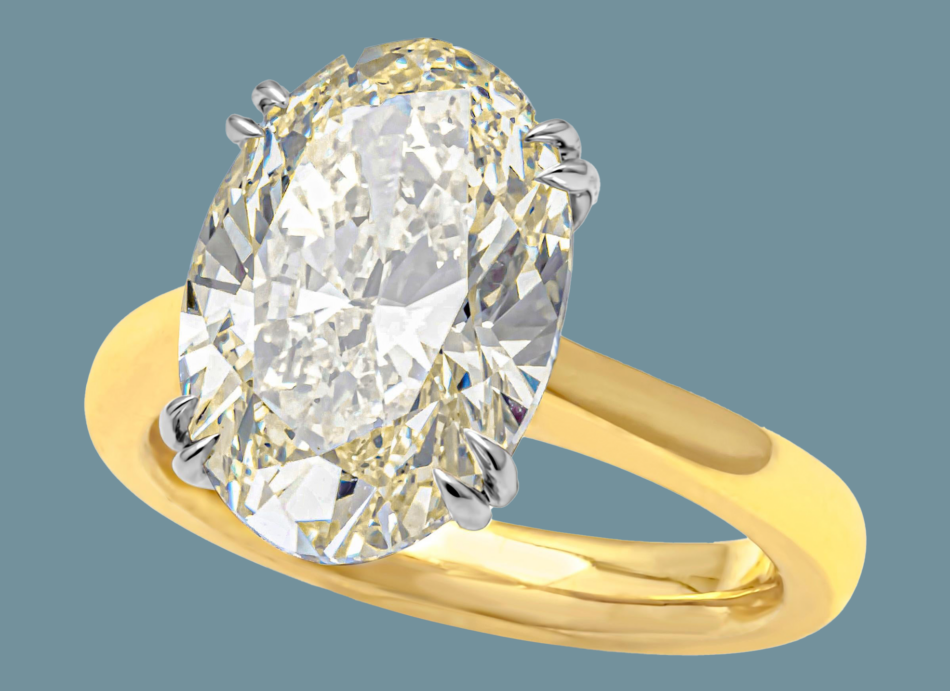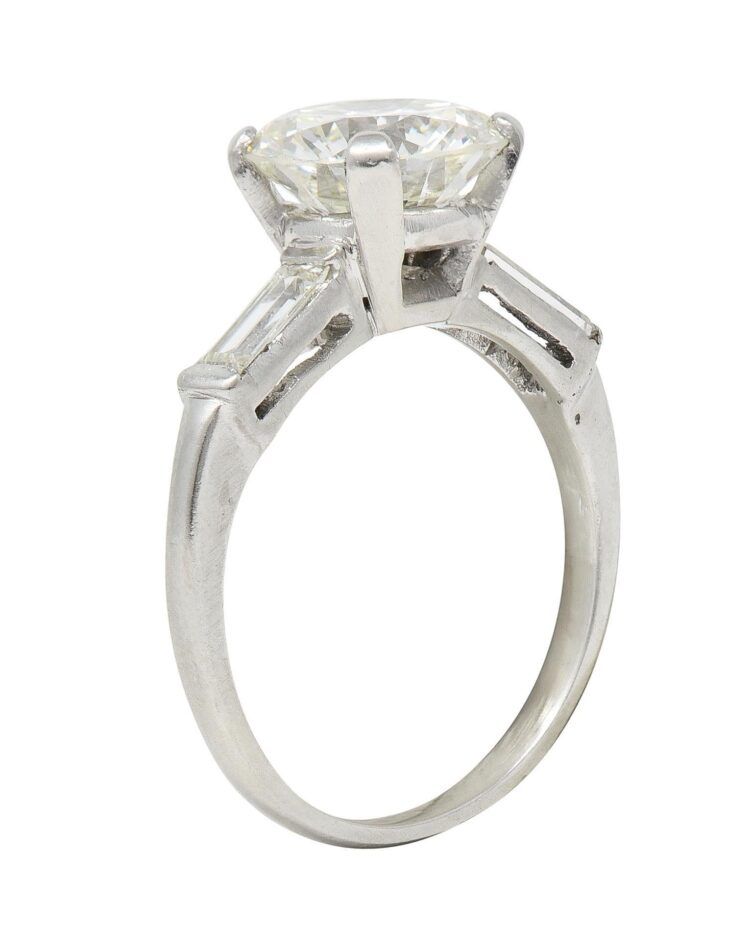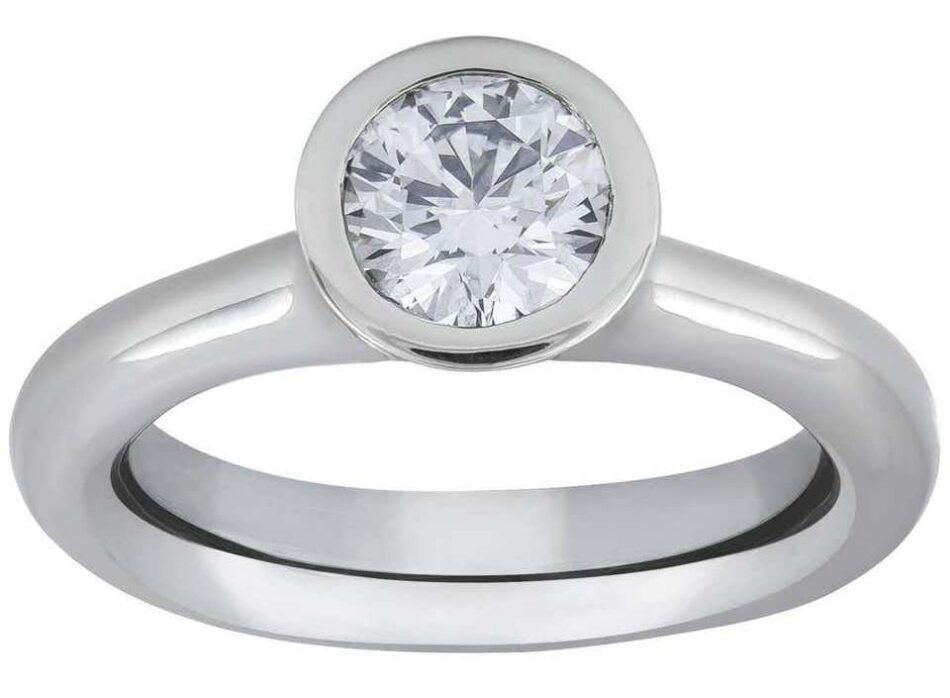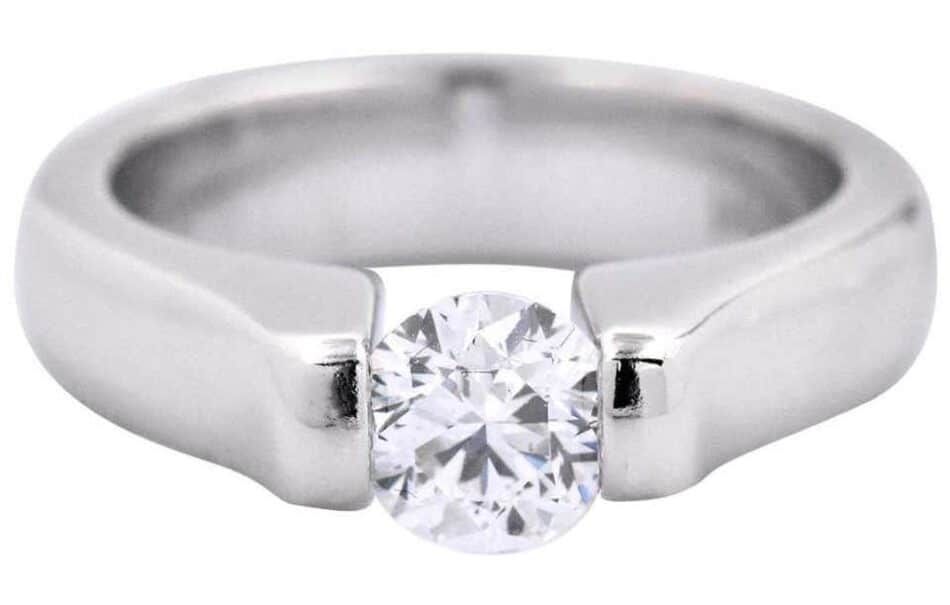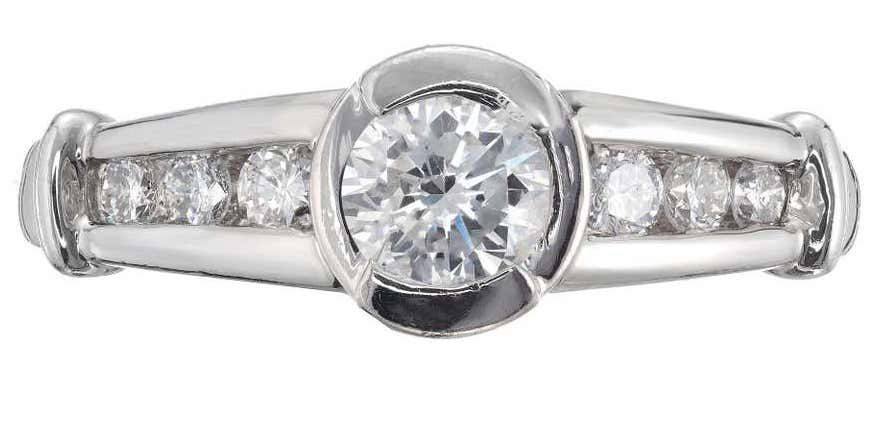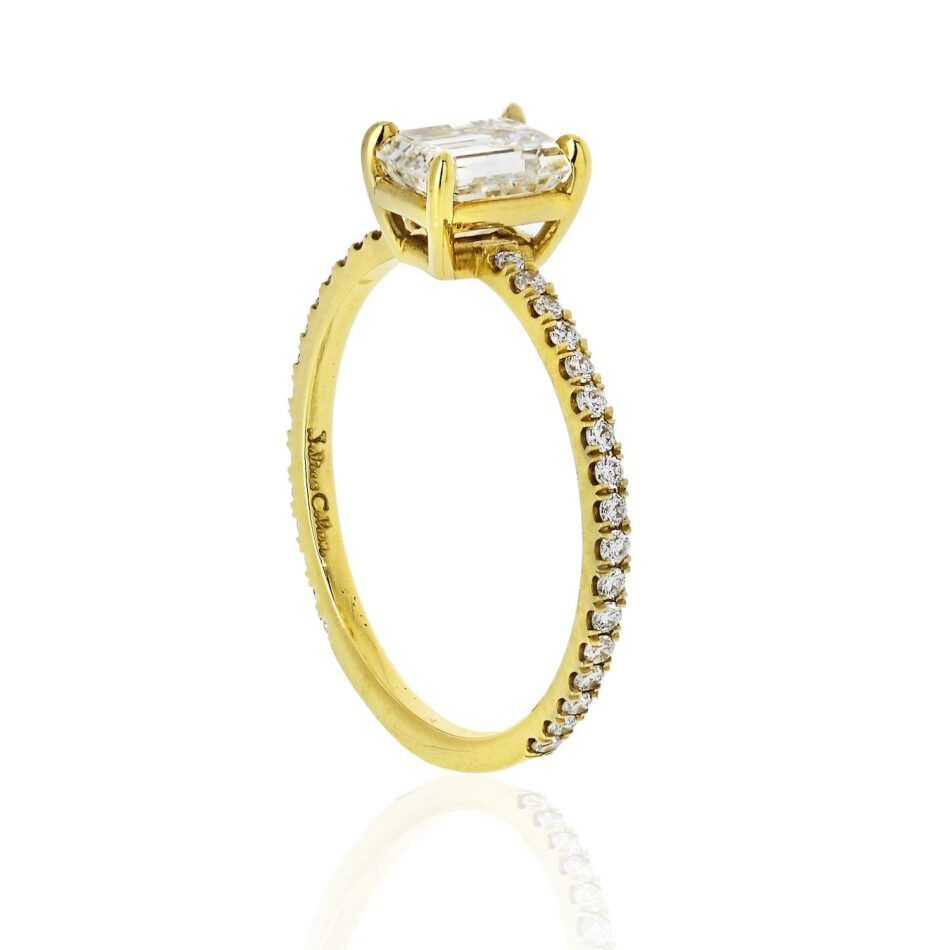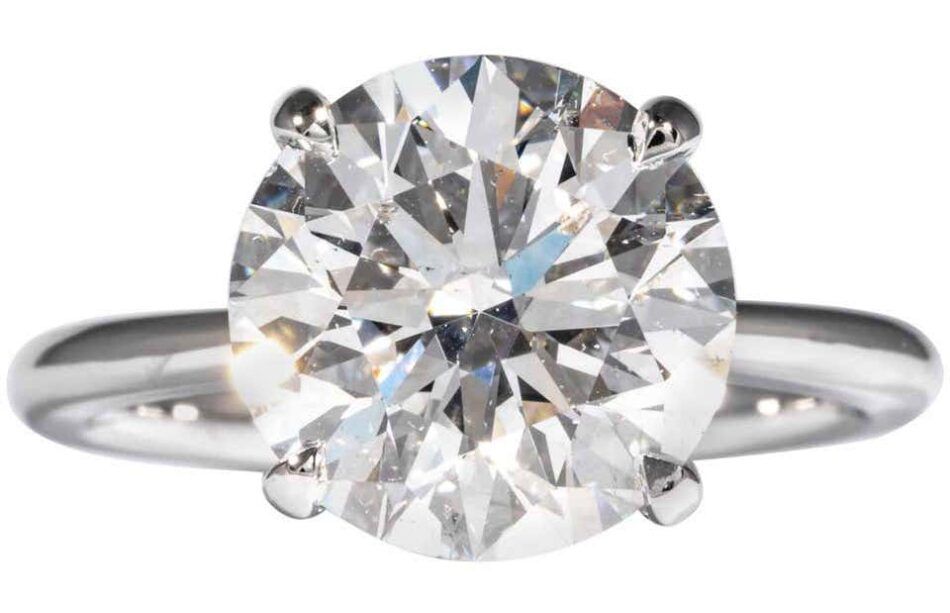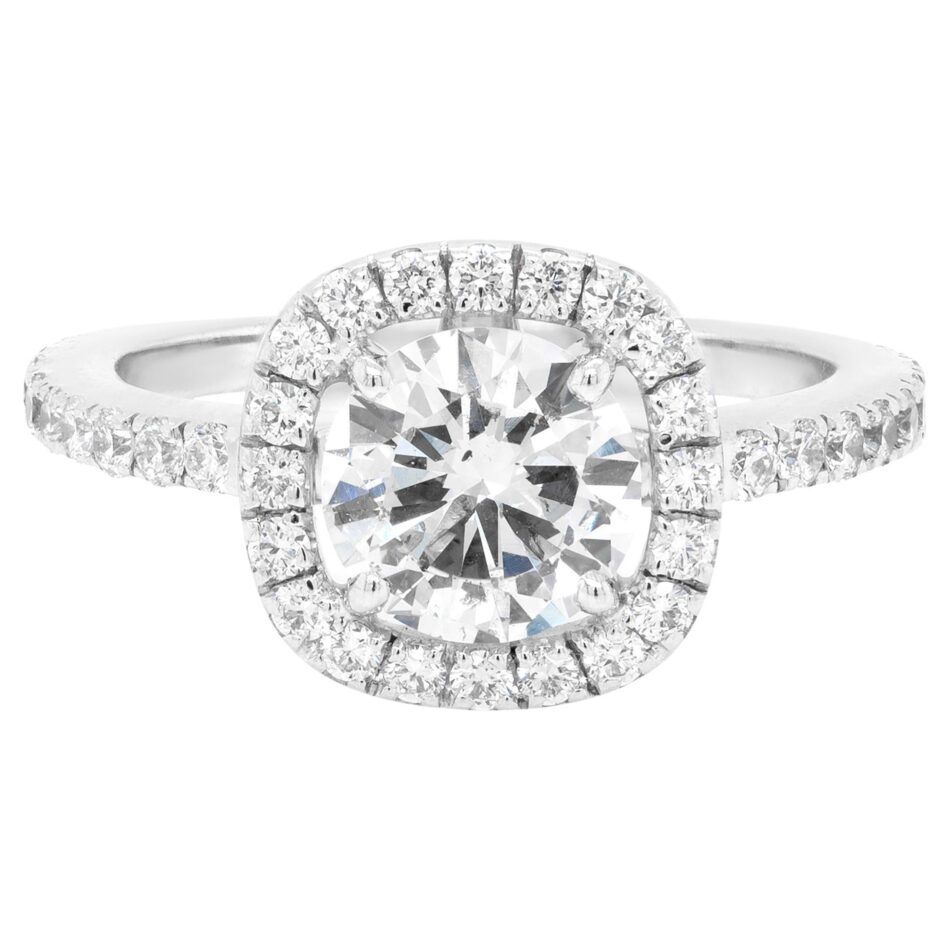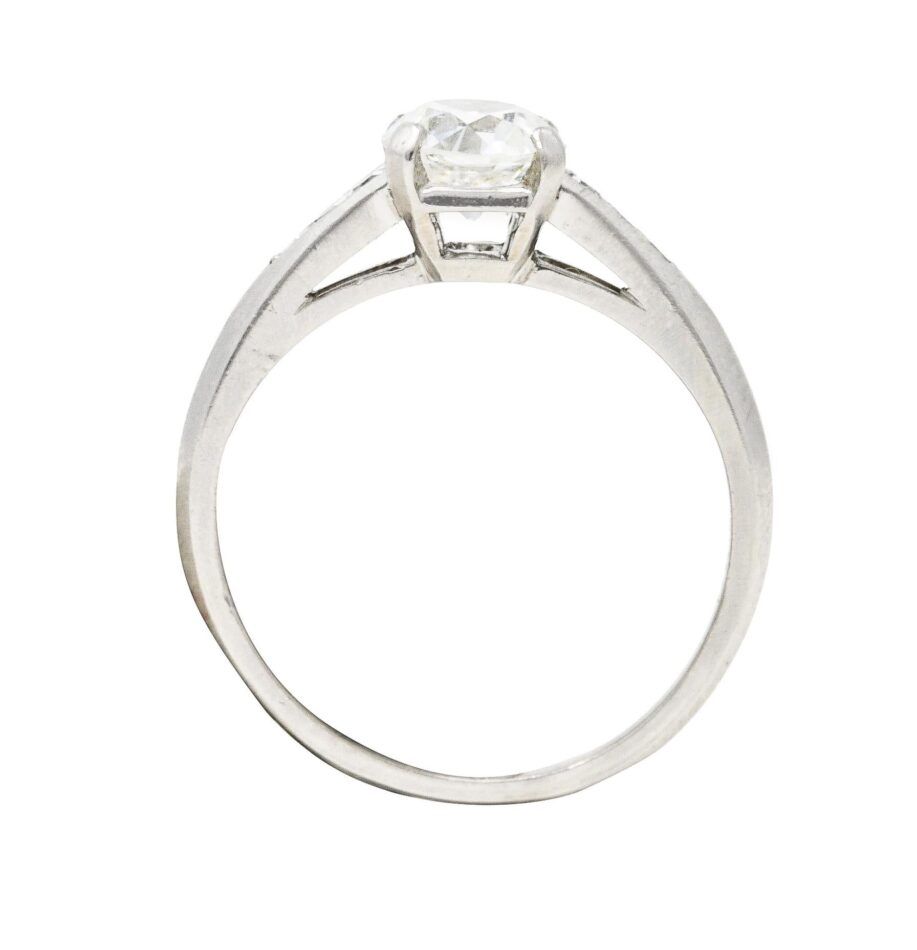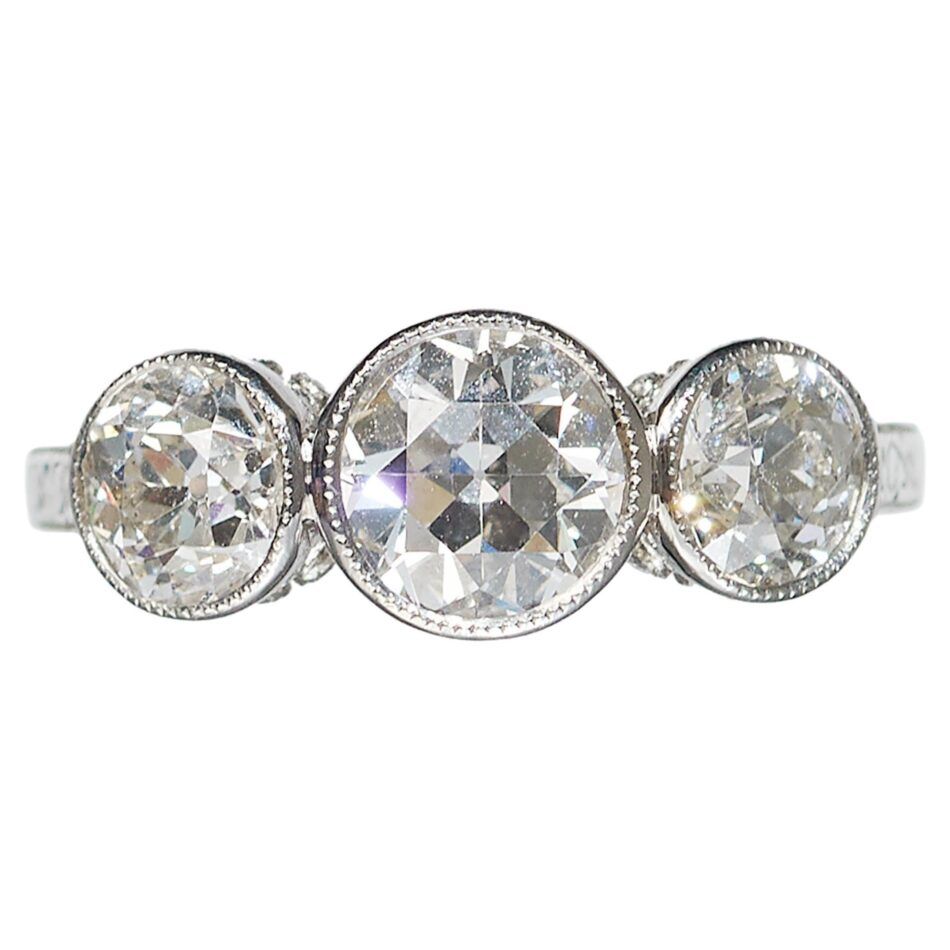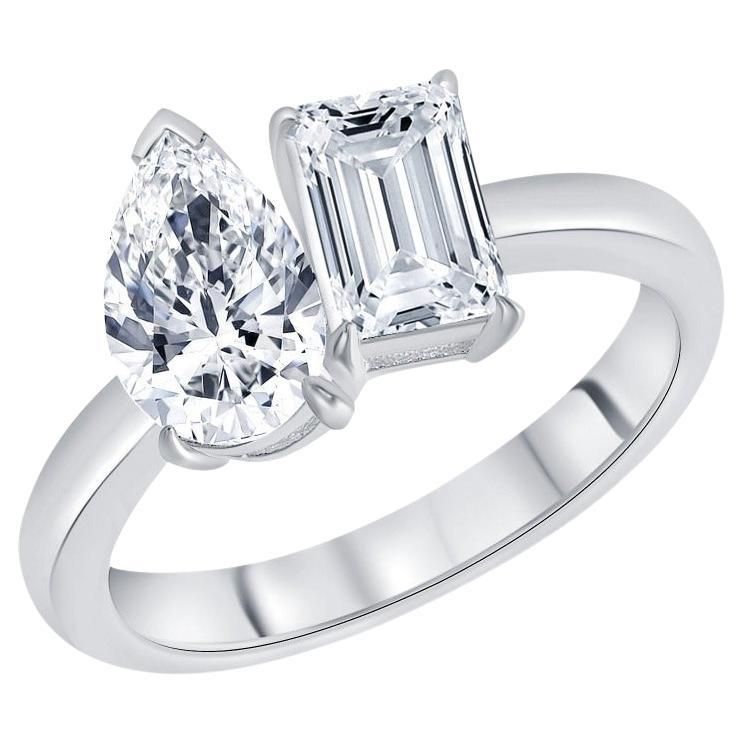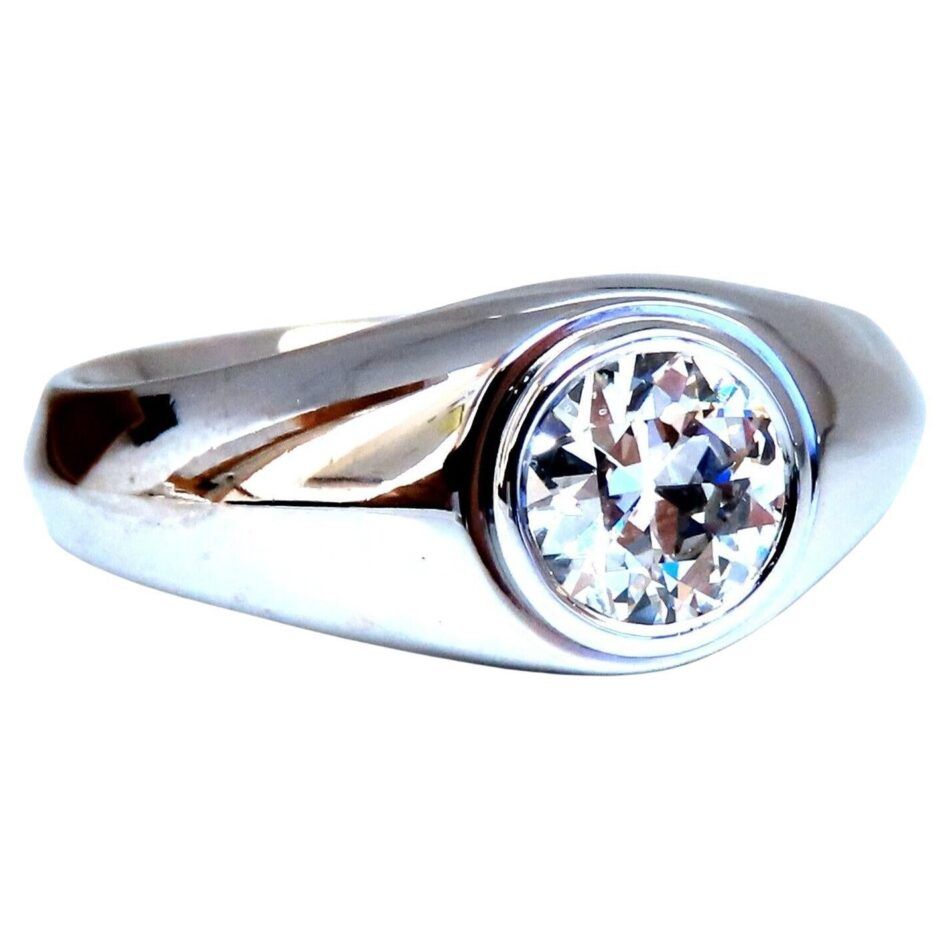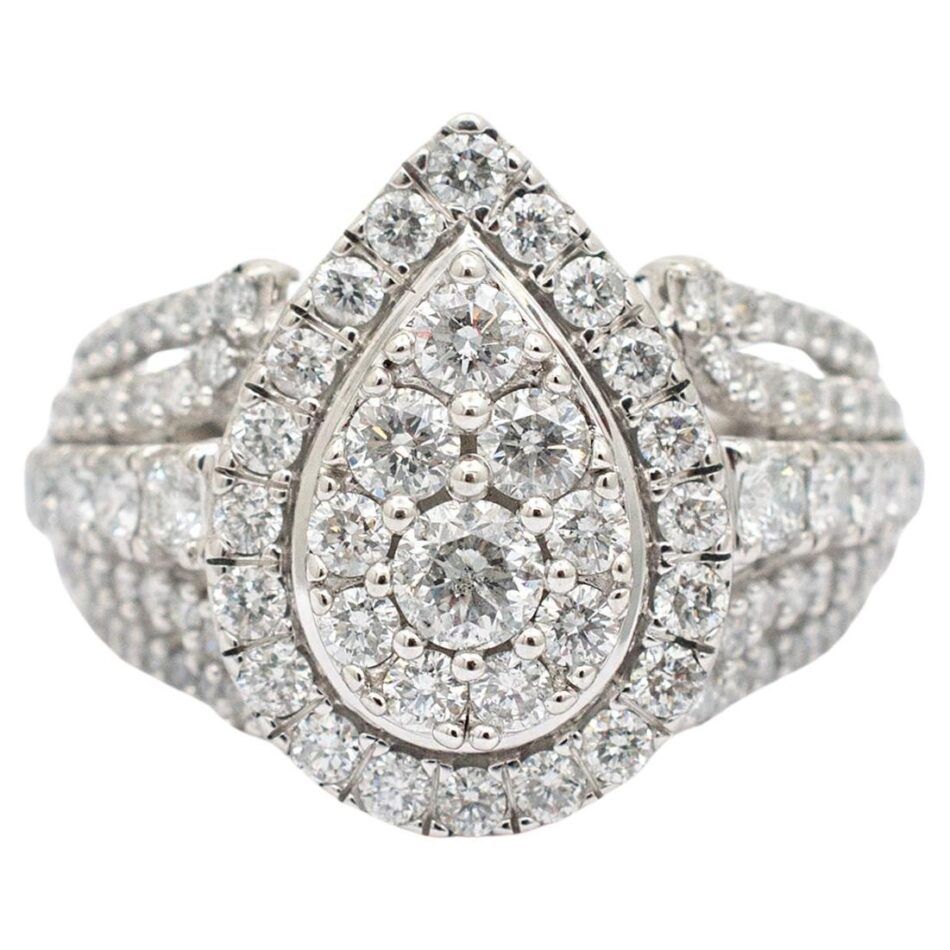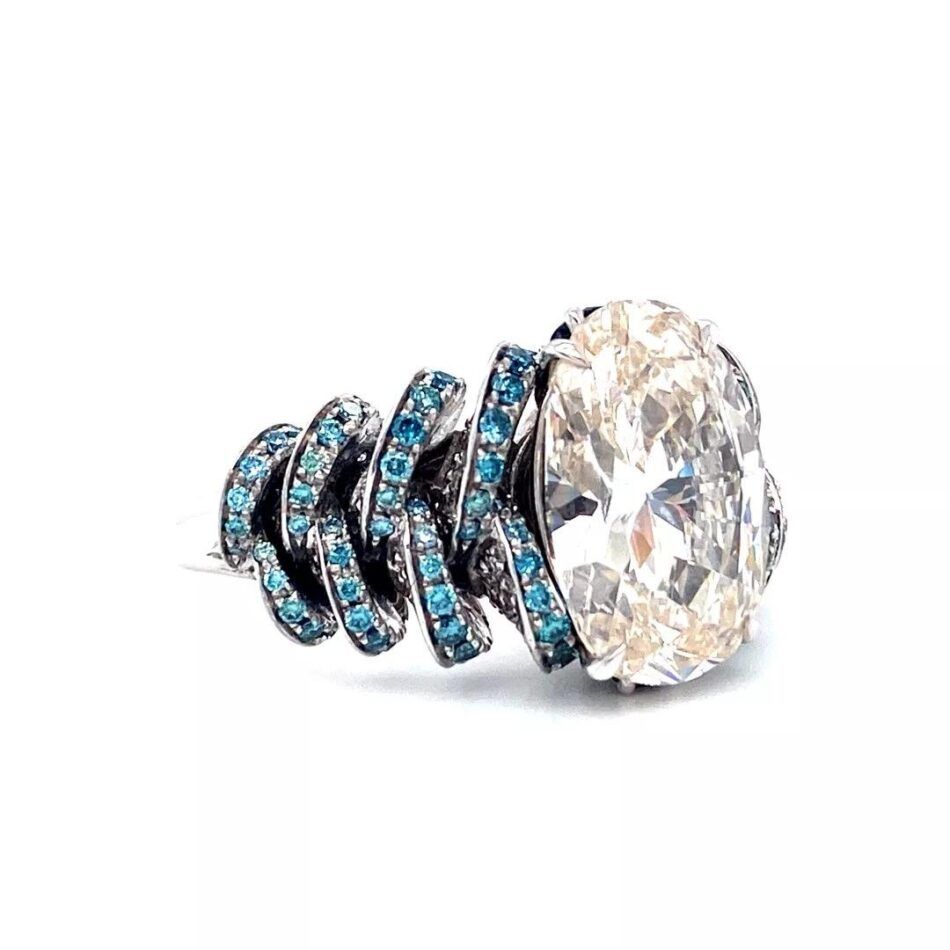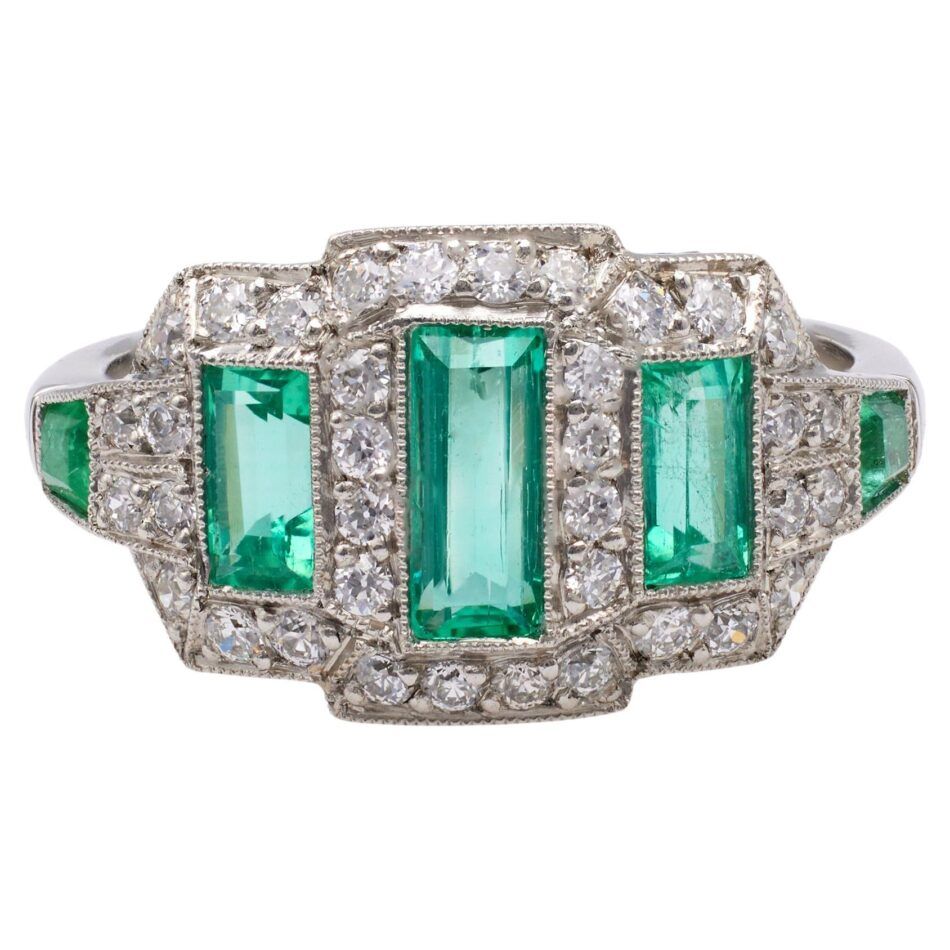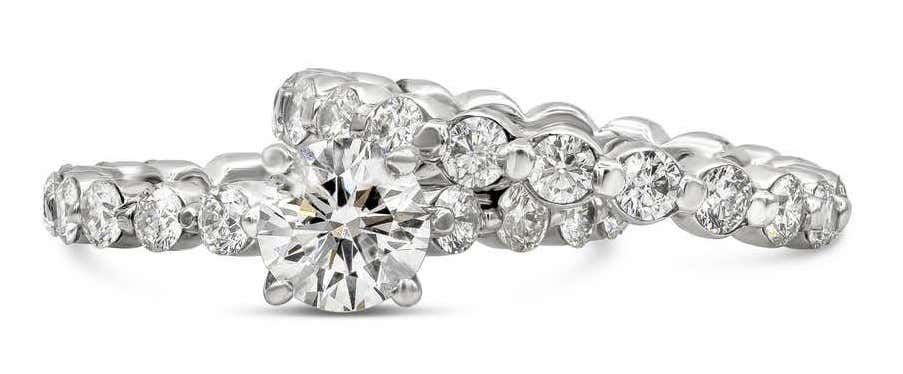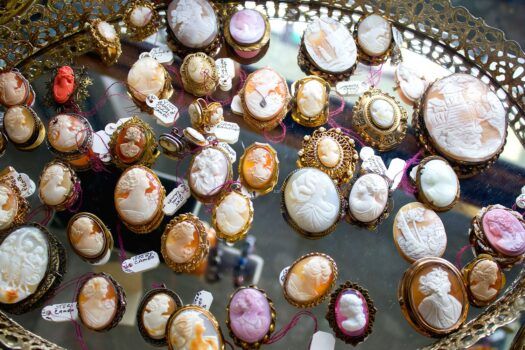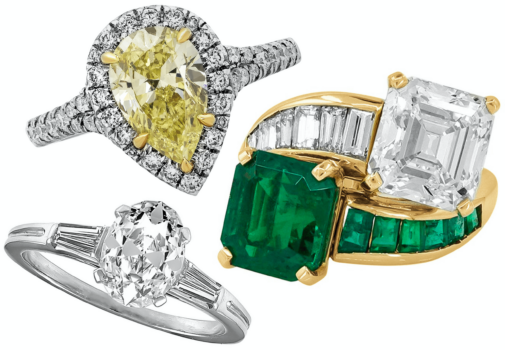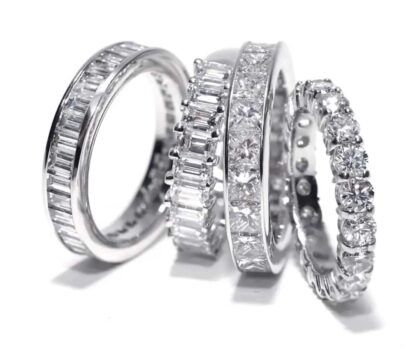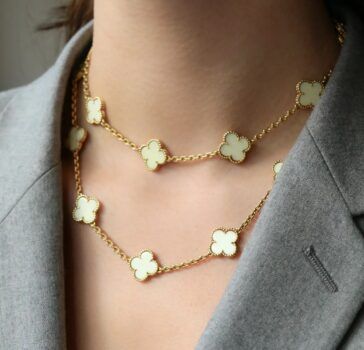Picture an engagement ring. Now, take out the center stone. What’s left is the metal part of the overall design, including the elements that secure the stone in place.
This is the setting, which is sometimes called the “mounting” or “mount.” Choosing the right setting is a critical step in getting exactly the engagement ring you desire.
You can narrow your search by establishing your budget. Then, if you’re creating a custom ring, you should settle on a stone shape and cut. Once you’ve done that, you can work with your jeweler to determine which setting styles will best accommodate the stone’s size and shape while maximizing its brilliance.
Whether you’re crafting your own ring or shopping for a master designer’s creation, there are other factors to consider. One is your lifestyle: Are you a landscape architect, for example, whose hands are often in dirt? Another is your aesthetic: Are you a clean and modern devotee, or do you want lots of diamonds and intricate details?
Engagement Ring Setting Styles
Below is a visual glossary of the engagement ring setting options and styles you’re most likely to encounter when working with a jeweler. It will also provide some guidance as you read product descriptions while shopping online.
1. Prong Setting
A traditional prong setting features four claw-, V-, talon- or square-shaped prongs. Minimal metal is required, so the diamond’s brilliance is on full display. The famous Tiffany Setting, introduced by Tiffany & Co. in 1886, is technically a prong setting with six prongs.
2. Bezel Setting
A bezel is a metal rim that surrounds the diamond completely, holding it firmly in place while protecting it from damage. A bezel setting is a great option for people who work extensively with their hands or worry about exposing the diamond to nicks and scratches over the course of the day
3. Tension Setting
A marvel of engineering that creates the illusion of a diamond floating in space, a tension setting offers an edgy, modern look. Instead of prongs or a bezel, the diamond is held in place by the pressure of the band pushing against its sides, which offers a broader view of the gemstone.
A tension setting is the perfect choice for those who like to stand out from the crowd. The skill needed to craft and properly size it makes this setting more expensive than most traditional ones.
4. Channel Setting
In a channel setting, the diamonds are snugly nestled between two metal rails running along the ring’s shank, or band, producing a neat, tailored look. This style, with its Art Deco vibe, is common in eternity rings like wedding and anniversary bands — but it’s quite unexpected on an engagement ring.
It’s also one of the most secure settings — and cost-effective, since the diamonds don’t have to be set individually and any variations can be hidden. Although many of the gemstones are embedded in the rails, the brilliance of those smaller stones gets accentuated. If you work with your hands — particularly with soft materials like hair or fabric — a channel setting will help prevent snagging.
5. Pavé Setting
The term “pavé” refers to rows of small diamonds (known in the jewelry trade as melee) set in a single or multiple rows with no visible prongs, for a seamless “paved” look. Pavé diamonds are part of all-over design treatment, cladding the ring’s shank and even decorating the basket (the horizontal band wrapping around the prongs) and gallery (the space between the basket and shank).
6. Solitaire Setting
The most popular engagement ring style, a solitaire setting features a single stone of any shape. A round brilliant diamond in a six-prong Tiffany Setting is the classic example and enduringly popular, because the stone sits high above the band, allowing for maximum light to pass through and reflect out from the stone.
7. Halo Setting
In a halo setting, a large diamond is surrounded by a single or multiple rows of smaller ones, forming a “halo” that adds extra sparkle and makes the center stone look even larger. In a hidden halo setting, the row of small diamonds is set lower on the featured stone, so the ring looks like a solitaire when viewed from above. You can add a halo around a center diamond of any shape — and since this will make the stone appear larger, you’ll get more bang for your buck.
8. Cathedral Setting
In a cathedral setting, two metal arches, or “arms,” extend from the shank to form a basket for the diamond, which is further secured by prongs or a bezel.
This lifts the stone high above the finger and creates a distinctive profile to which many designers add decorative flourishes and diamond accents.
9. Three-Stone Setting
Comprising a “hero” diamond flanked by two smaller ones, the classic three-stone design, sometimes called a “trilogy” or “trinity” setting, is intended to symbolize a couple’s past, present and future.
Although the most common variation of the style features three stones of the same type and cut, you can combine different shapes and types of gems to create a fully customized look.
10. Two-Stone Setting
The two stones of this design, also known as “toi et moi” (meaning “you and me” in French), represent the two hearts (or souls) of the engaged couple. Offering a creative opportunity to pair gems of different shapes and color in a bespoke and romantic one-of-a-kind ring, the style has become quite popular, with recent examples featuring asymmetrical alignments or colored-stone accents for a distinctive look.
11. Bar Setting
In this setting, two vertical metal bars secure each diamond in place. The bar setting is most often seen in three-stone rings but can be used on bands, as well. It has a more modern look than a channel setting and allows two more sides of each stone to shine. The overall design is wonderfully symmetrical — and very secure.
12. Flush Setting
No prongs, no bezel. In a flush setting, sometimes called a flush mount, the diamond is set directly into the metal, resulting in a smooth, level surface. This one is perfect for bombe rings, which are wider and have a domed shape, or any design that involves several stones, such as a cluster (see below).
13. Cluster Setting
In a cluster setting, a mass of small diamonds is arranged in a floral shape or a pattern suggesting the look of a single round or other-shape diamond. The style has gained favor for its affordability and modernity, compared with, say, a traditional solitaire setting.
Factors to Consider When Choosing an Engagement Ring Setting
There’s more to selecting the perfect engagement ring setting than how it looks. The following elements can help you determine what setting best complements your stone and your ring finger.
Type of Metal

Most couples find themselves deciding between platinum and 14- or 18-karat white, yellow or rose gold for their engagement ring settings. Platinum is the sturdiest option and lends itself to the most intricate designs. That is why the engagement rings of the Edwardian, Art Nouveau and Art Deco periods, when it was the go-to metal, were able to incorporate so much millegraining, lacy openwork and filigree, as well as floral motifs.
Quite a few luxury jewelers prefer platinum, with its naturally lustrous white hue, to white gold, whose color is often achieved with rhodium plating that can wear off, producing an undesirable yellowish color. “Platinum is the way to go if you like a heavier feel to your ring,” says Mark Broumand, a Los Angeles–based jeweler specializing in engagement rings. “And you won’t notice the color fading over time.”
With its hefty weight, platinum is more expensive than gold. Couples who opt for the latter, however, are often motivated not by cost but by the warm, rich tones of yellow or rose gold.
“I’ve been selling a lot of yellow- and rose-gold engagement ring settings lately,” says Margot Lowe, of M. Lowe & Co. in Berkeley, California. She advises these clients, however, to have the stone set in prongs of white gold or platinum, which tend to make a diamond look whiter and brighter.
Finger Dimension
Trying on different ring settings can help you determine what looks best on your finger. But you can narrow down your options by considering factors like the length and width of your ring finger.
Wider bands, bold styles and princess-cut diamonds are particularly flattering to long fingers. Slimmer bands and elongating stone shapes like oval or pear cuts suit shorter fingers.
People with wider fingers or bigger knuckles can support thicker bands and bigger settings, like a cluster. Factor in your typical nail length, too, as long pointy nails can make your fingers appear longer.
Ring Size
Your fingers’ measurements can fluctuate with the ambient temperature and humidity, inflammation in your system or what you’ve eaten and drunk. Try to be at your body’s version of homeostasis when getting sized for engagement rings.
The band thickness will also partly determine your ring size. Sizes for thinner bands will run a bit larger than those for wider bands.
Lifestyle
If you intend to wear your ring everyday, to work and to play, you need a secure setting. A solitaire might seem to give you less to worry about, since there’s only one stone at risk of falling out. But more intricate settings and groupings of stones can be safer for active lifestyles because there’s more built-in protection for each stone.
The more complicated the construction of your ring, the more repairs are likely to cost, too.
Ring Maintenance
Some settings, like a channel or cluster setting, are harder to clean than others because they have more nooks to collect debris. And vintage and antique engagement rings need regular maintenance to ensure that the stones are secure.
When deciding which style and setting are right for you, consider how often you’ll be able to have your ring professionally inspected and cleaned — and how much that maintenance might cost.
Nontraditional Engagement Ring Settings
The current preference among modern brides is for engagement rings with very slender, blade-thin shanks because chunkier, more metal-forward designs can feel a bit old-fashioned (given their prevalence in the 1990s and early 2000s). Still, a large center stone weighing three carats or more may require a sturdier band.
Lowe has a solution: “If you have a shank that is narrow, you can have the setting be a little bit taller, and that makes it strong. And if you really want it to look skinny, you can do a knife-edge band, which comes to a ridge in the middle and pulls the eye so that all you see is that edge, making the shank look thinner overall.”
Non-Diamond Engagement Rings
Although diamonds remain the standard stone for engagement rings, many people are looking for ways to make their rings feel distinctive. Every ring setting accommodates a range of gemstones.
Alexandra Macon, former Vogue.com weddings editor and the founder of the all-things-wedding website Over the Moon, suggests a few non-diamond gems that make for distinctive engagement rings.
“Aquamarines are one of the most beautiful gemstones with the best price point. Who could forget the emerald-cut aquamarine ring Meghan Markle wore to her wedding reception?” she says. “Sapphires are another all-time favorite of mine. They go with everything. Also on my top-three list: citrines. There’s something really cool about a yellow engagement ring. It’s unique and different, which I love.”
Low-Profile Engagement Rings
Rings may have either a high or low profile, noticeable when you look at them from the side. In a low-profile ring, the culet, or bottom tip of the diamond, almost touches the band, so it sits closer to your finger. Low-profile engagement rings often use a bezel or solitaire setting.
When speaking of rings (in contrast to personalities), low-profile doesn’t mean barely noticeable. Rather, it means that the ring’s center stone fits more snugly in its setting and is less likely to snag. For people with an active lifestyle or who wear gloves often — like healthcare workers — a low-profile ring is practical and convenient.
Should You Choose an Antique, Vintage or Contemporary Engagement Ring?
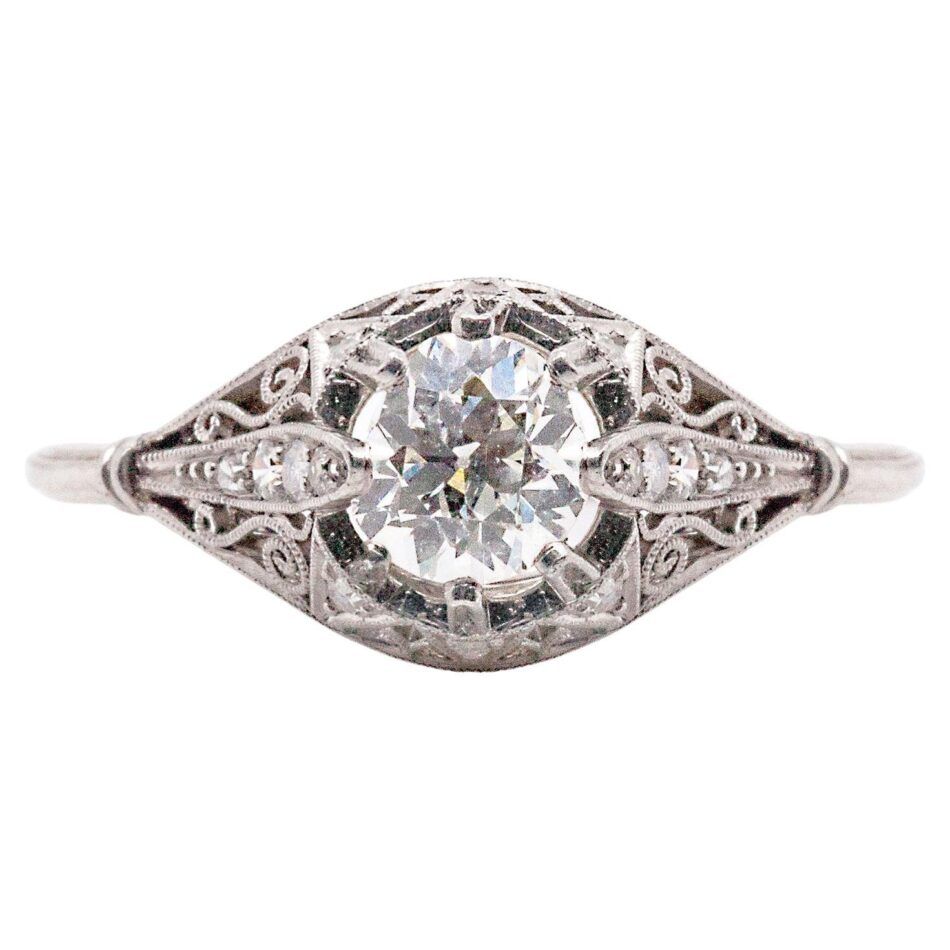
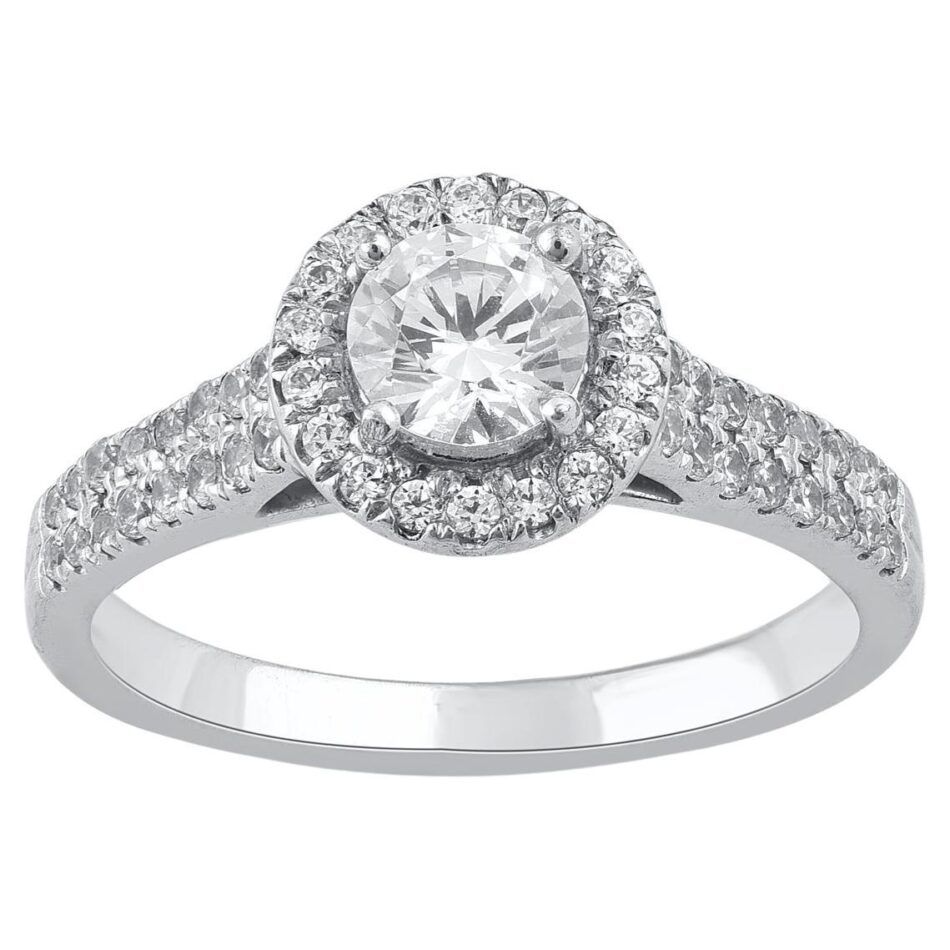
If you have very definite opinions about your engagement ring’s setting and stone, you’re more likely to find exactly what you want in a contemporary piece. For custom contemporary engagement rings, the setting and the diamond are often sold separately, so a stone meeting your four-C criteria can be sourced for you. Other engagement rings, especially antique and vintage ones, are sold ready to ship, with the center stone’s value factored into the quoted price.
Jewelry-making processes and standards have changed over time, so what was available when antique or vintage rings were made might be very different from what is available today. “The majority of rules that apply to modern stones do not apply to vintage. It’s like comparing apples to oranges,” says Liz Clancy, of Trumpet & Horn. “The craftsmanship and technology used on these rings and stones are so different from anything we have today, so you kind of have to put yourself in their shoes and pretend you’re in the 1800s.”
With antique and vintage rings, pay close attention to condition, particularly the security of the setting. Even if it’s described as “excellent,” the ring may not be pristine. “There may be some small examples of wear,” says Boston-based vintage and antique jewelry dealer Tiina Smith. “But damage to settings or [evidence of] earlier repairs can be corrected by an expert jeweler and is to be expected with jewelry of a certain age.”
(See also the 1stDibs buying guides for vintage engagement rings, Art Deco engagement rings and antique engagement rings.)
Shopping for Engagement Ring Settings
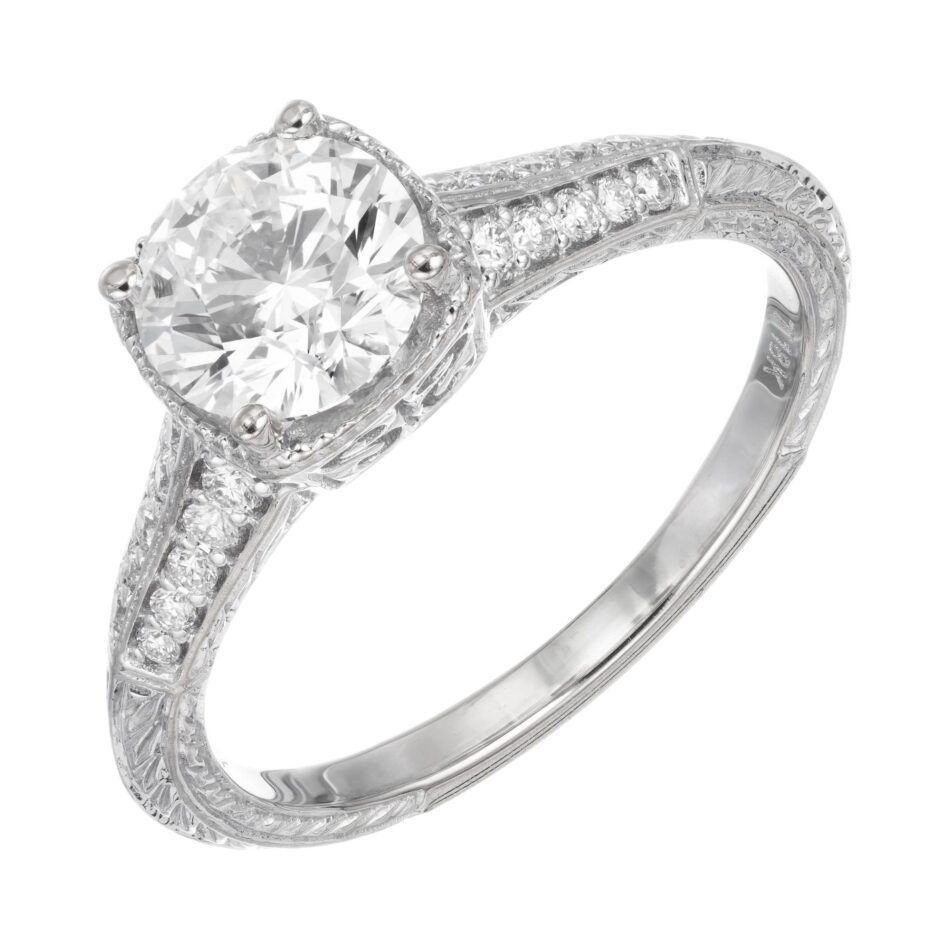
Shopping for engagement rings should be fun and informative. The options today are nearly limitless — there is a ring out there for every finger. Do your research before you start shopping, but let your shopping serve as research, too. And follow the advice of Los Angeles–based Single Stone founders Ari and Corina Madilia: ”Go in with an open mind. Try on things you never thought you would like, and you might be surprised.”
Online vs. In-Store Shopping
Shopping online allows you to discover what’s available and what you gravitate toward. In-store shopping allows you to see how different rings look on your finger — you can try on every setting to see what suits you best.
If you have trouble finding what you want in a store, remember that online stock changes more frequently. At 1stDibs, we curate weekly from our worldwide network of trusted sellers, so new options are regularly available, and the vendors are reliable.
Understand Your Warranty and Return Policy
An engagement ring is an expensive purchase that you want to last forever. Pay attention to the return policy and warranty offered by the seller.
1stDibs is committed to your satisfaction, so we offer a price-match guarantee, buyer protection and exceptional support with every purchase. When your purchase is backed by this level of support, you’ll know you’ve made the right choice.
The Final Consideration
Once you’ve decided on the metal, setting style and design details for your engagement ring, there’s one final piece of the puzzle to consider: your wedding band. Whether you go with a simple metal band or a sparkling diamond eternity ring, it will need to nest well with your engagement ring — ideally, no gaps between the two.
If you’re shopping with your partner, it’s good to give this matter some thought as you try on styles, as it can affect how low to the finger the diamond can sit (this is usually not an issue with high-perched cathedral or prong settings).
A bezel-set center stone — especially one with an elongated shape, like oval, emerald-cut or marquise — will also affect your wedding band options if you want to wear them together on the same finger.
A slightly curved or V-shaped wedding band that is customized to accommodate your engagement ring design is a popular — and effective — solution.
